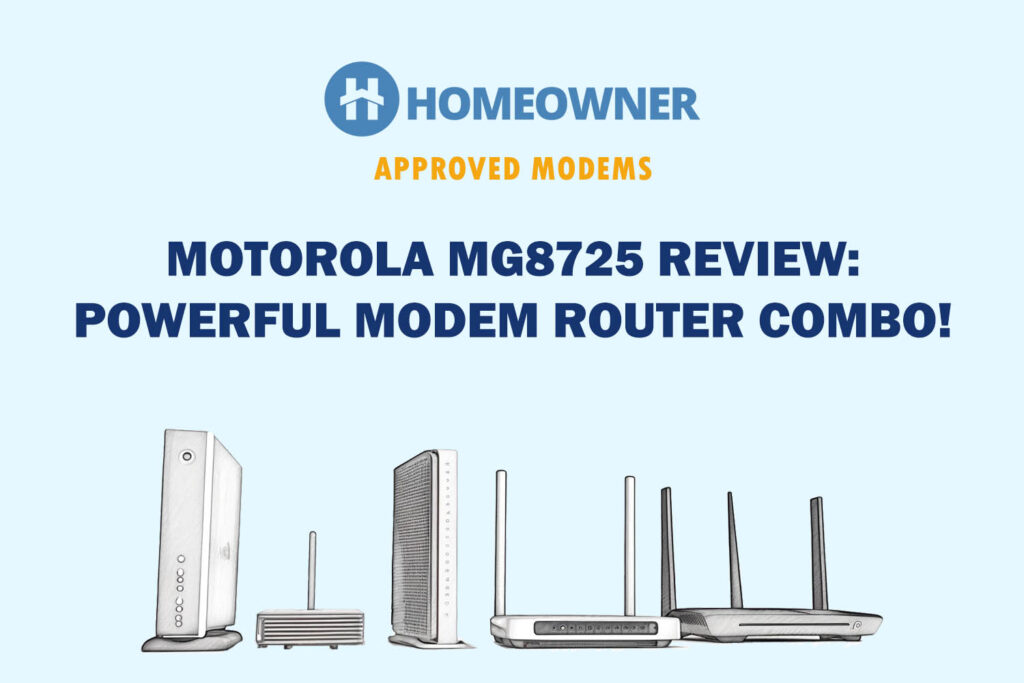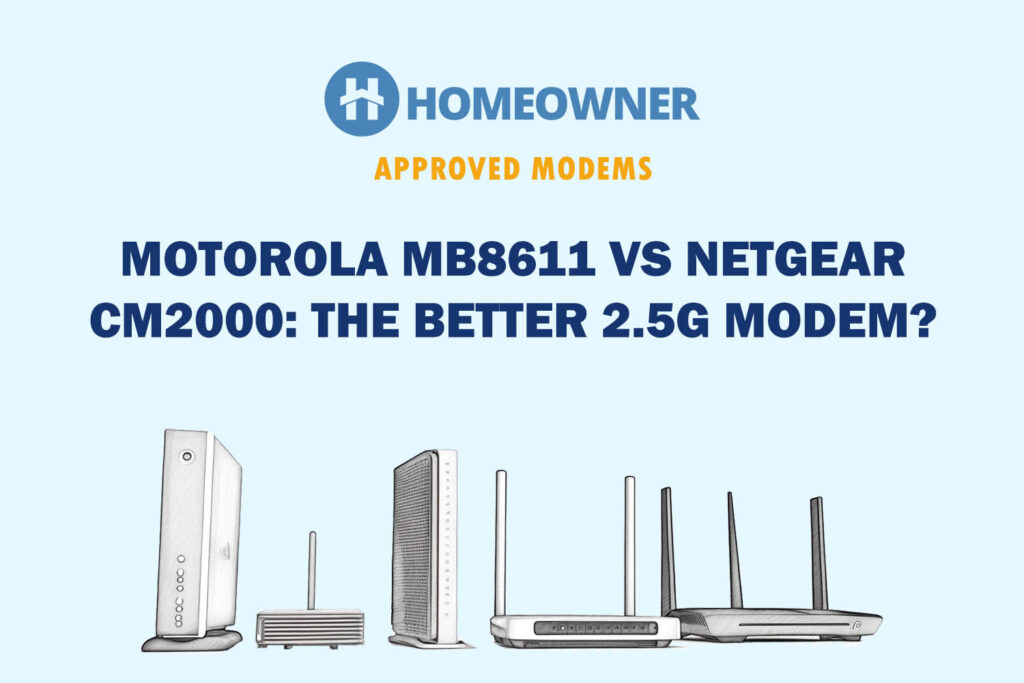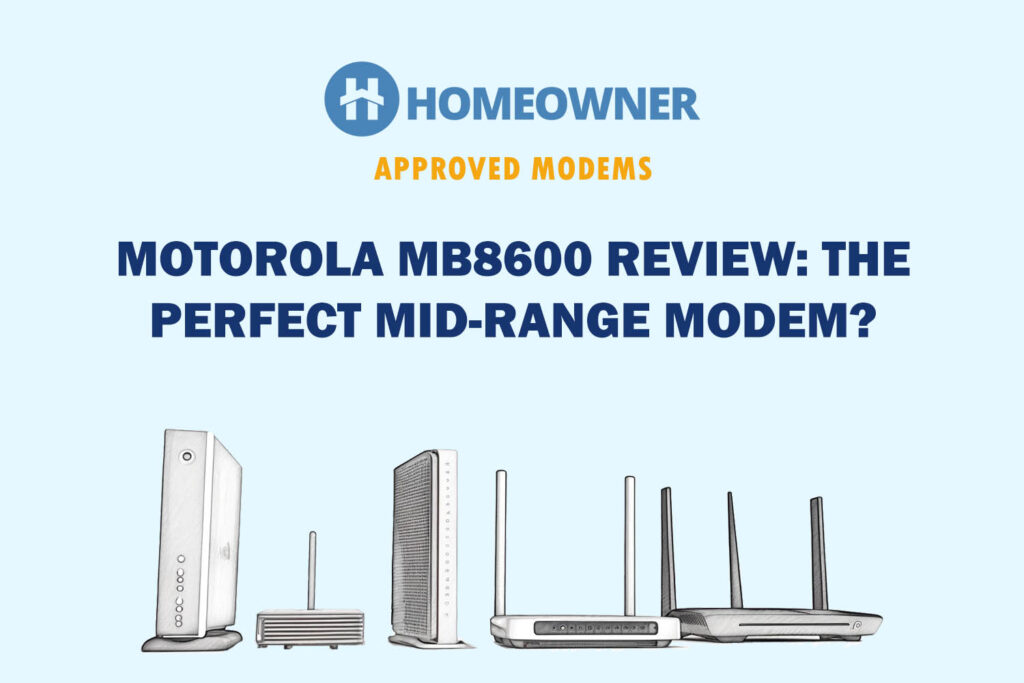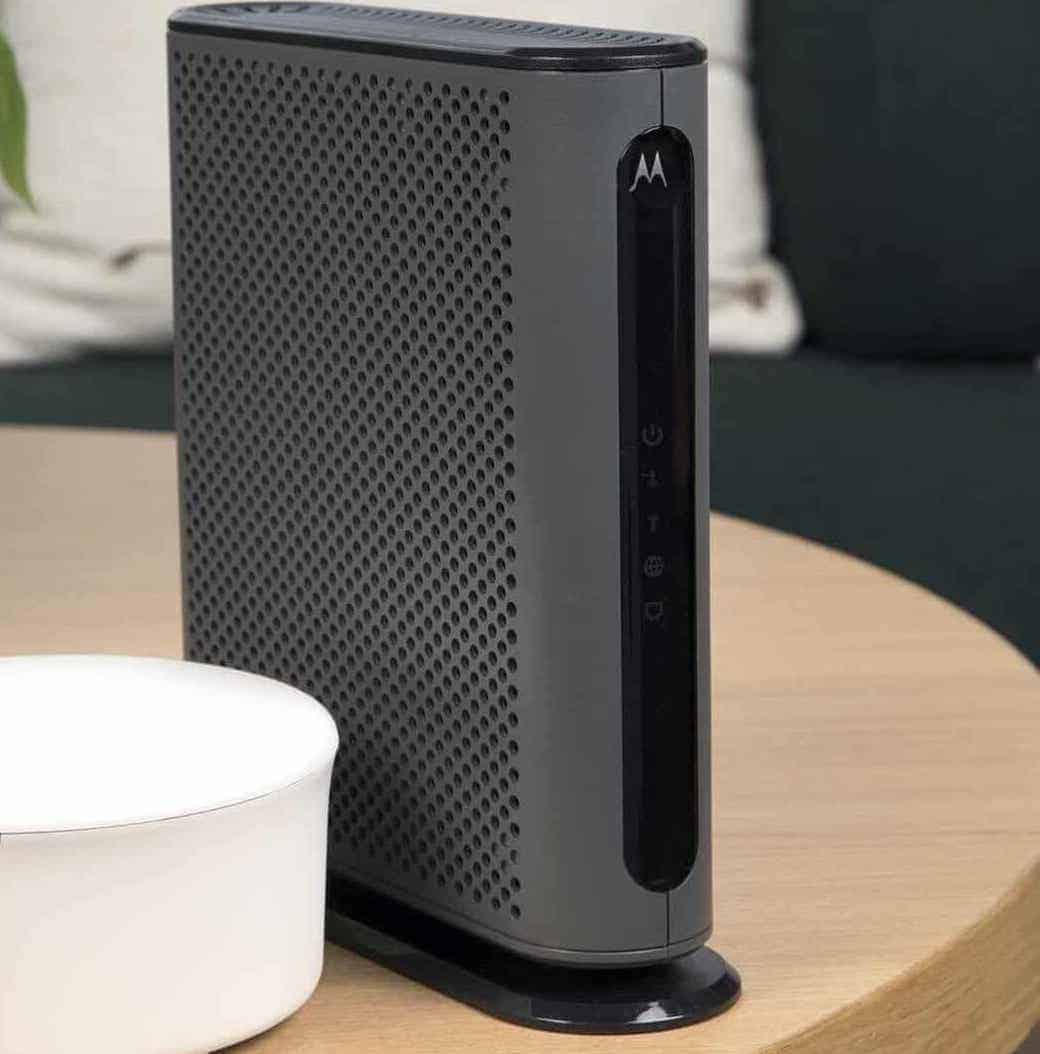
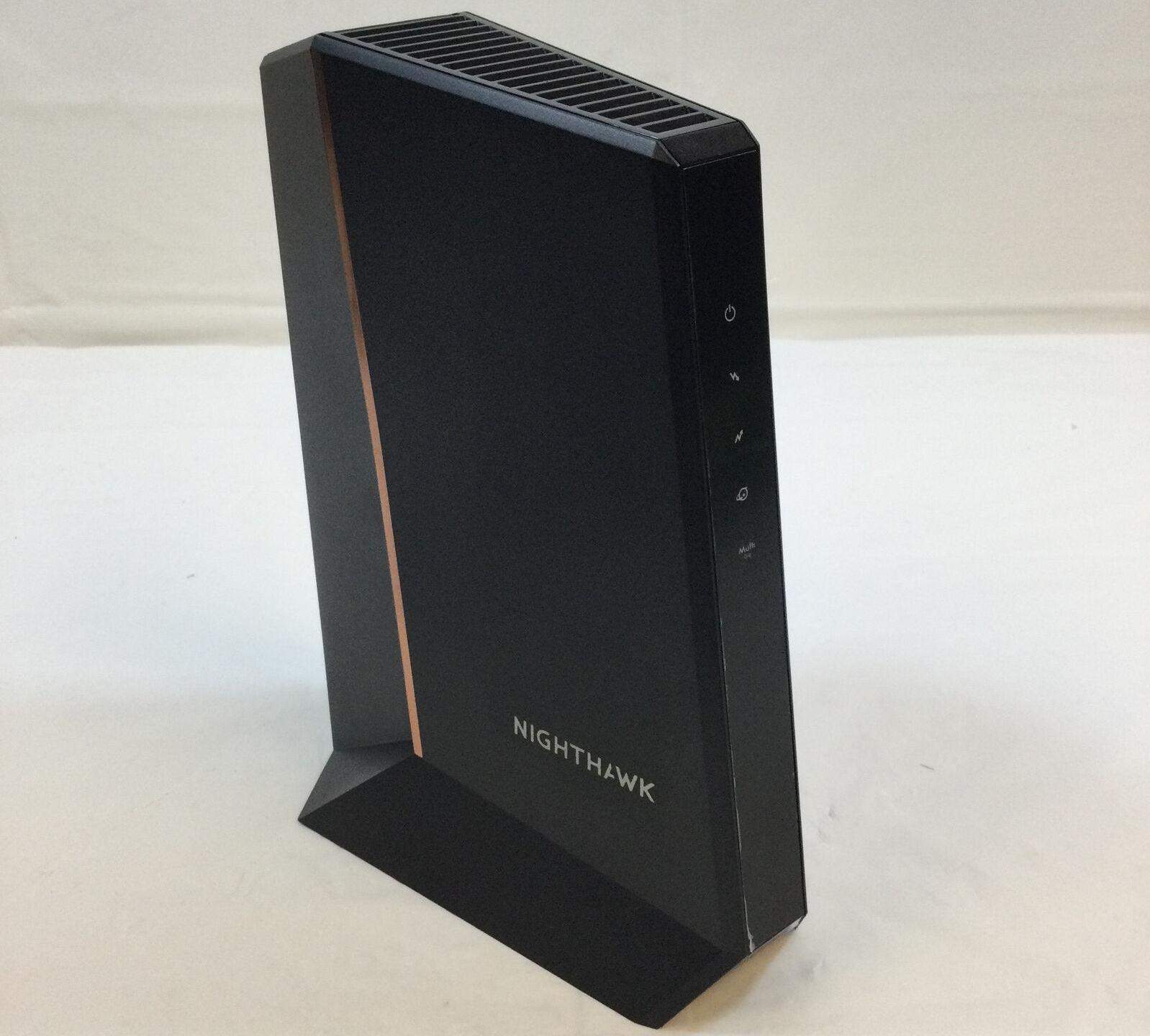
Motorola's MB8611 and Netgear's CM2000 are top-of-the-line modems supporting multi-gig internet speeds. Their technical specifications are so similar it’s inevitable to get confused between the two.
The major differences between Motorola MB8611 and Netgear CM2000 lie in the design, price, and ISP compatibility. So which one makes more sense in 2025? How do both perform in long-term usage?
Let's find out through comparative analysis across multiple aspects.
MB8611 vs CM2000: Specs Comparison
| Aspects | Motorola MB8611 | Netgear CM2000 | Winner |
|---|---|---|---|
 | 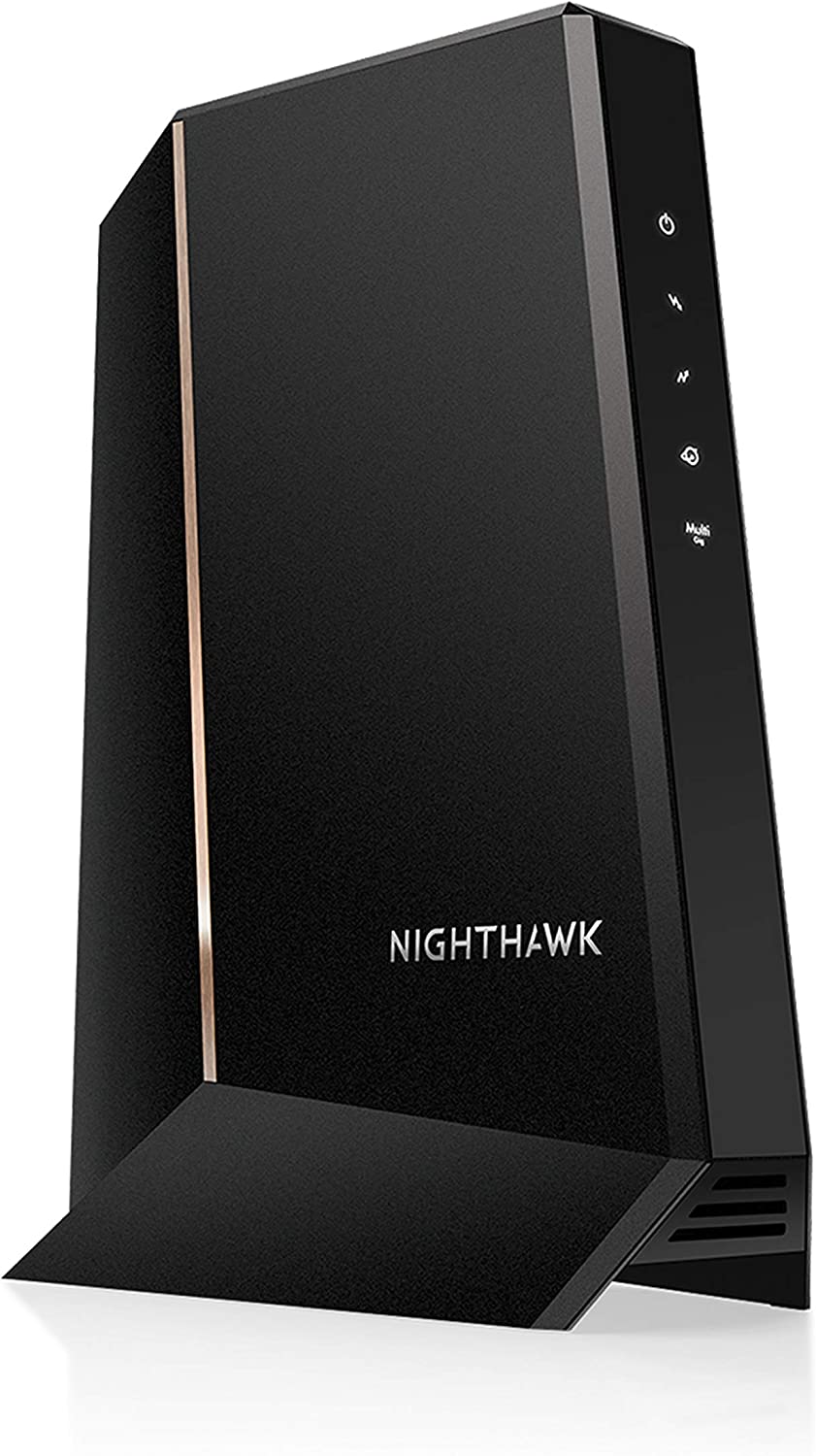 | ||
| DOCSIS Technology | 3.1 | 3.1 | DRAW |
| Channel Bonding | 32 x 8 | 32 x 8 | DRAW |
| Ports | 1 x 2.5G Ethernet | 1 x 2.5G Ethernet | DRAW |
| Internet Plan Support | Up to 2.5 Gbps | Up to 2.5 Gbps | DRAW |
| Modem/Router Combo | No | No | DRAW |
| ISP Compatibility | Xfinity, Cox, Spectrum, Mediacom, Midco, Breezeline, Astound, and WOW! Internet. | Xfinity, Cox, Spectrum, Optimum, Sparklight, Mediacom, Midco, Astound, Breezeline, and WOW Internet. | Netgear |
| RAM | 512MB | 512MB | DRAW |
| Nand Memory | 128MB | 256MB | Netgear |
| Processor | Qualcomm Broadcom | 1.5GHz Dual-Core Broadcom BCM3390 | DRAW |
| Price | $189 (As of 16th March 2023) | $253 (As of 16th March 2023) | Motorola |
| Dimensions | 7.88 x 7.25 x 2.25 inches | 9.92 x 4.7 x 8.7 inches | Motorola |
| Weight | 1.15 Pounds | 1.02 Pounds | Netgear |
| Release Date | N/A | September 22, 2020, | N/A |
Motorola MB8611 vs Netgear CM2000: Detailed Comparison
Before I came up with this comparison, I individually tested and used both devices for months. I know their ups and downs very well and will put my honest views below.
If needed you can read their individual reviews:
Key Takeaway (Spoiler): Netgear CM2000 is a better choice than Motorola MB8611, as I faced frequent disconnects with MB8611. Some of the users also face firmware-related issues. So, CM2000 is definitely worth the extra money.
That said, let's get into the details.
Tech Stack
Technically, both are among the top-rated DOCSIS 3.1 modems with a similar maximum speed capacity of 2.5 Gbps. Not only that, both are backward compatible with DOCSIS 3.0 to support maximum internet service plans.
Other than that, both entail the latest IPv6 technology alongside features like low latency mode, low power mode, and turbo modes for gaming.
Tech-wise, there aren’t many differences, so you can expect an almost equivalent performance from them.
Speeds & Performance
As mentioned earlier, DOCSIS 3.1 and a maximum speed cap of 2.5 Gbps mean both have the capability to deliver ultra-fast speeds, provided you have a viable ISP. However, the real-time values might tell a different story.
I paired Xfinity 2 Gbps plan and measured download and upload speeds for both:
For Motorola MB8611, the respective values fared at 1.85 Gbps and 147 Mbps, while it recorded 1.97 Gbps and 169 Mbps for Netgear CM2000. And the wired connectivity with the 2.5G port delivered excellent results for both.
The primary reason was poor firmware optimization in Motorola MB8611, resulting it lacking in the ability to rapidly process the data sent back by the router. Lately, I even faced frequent disconnects, leading to a bad experience.
Ping is important when playing online games, streaming high-resolution media, and web browsing, but gaming hits the worst. So, Netgear CM2000 is a better choice for high-ping involving tasks, especially gaming.
ISP Compatibility
Regarding compatibility with internet providers, both MB8611 and CM2000 support the major ISP providers, including Xfinity, Cox, and Spectrum. But the latter takes the edge by delivering additional compatibility.
👉 How To Speed Up Your Internet.
Design & Port Setup
Design is the differentiating factor between the two DOCSIS 3.1 modems. Although the port setup is the same, the shape, form factor, shape, and aesthetics of the two are completely different.
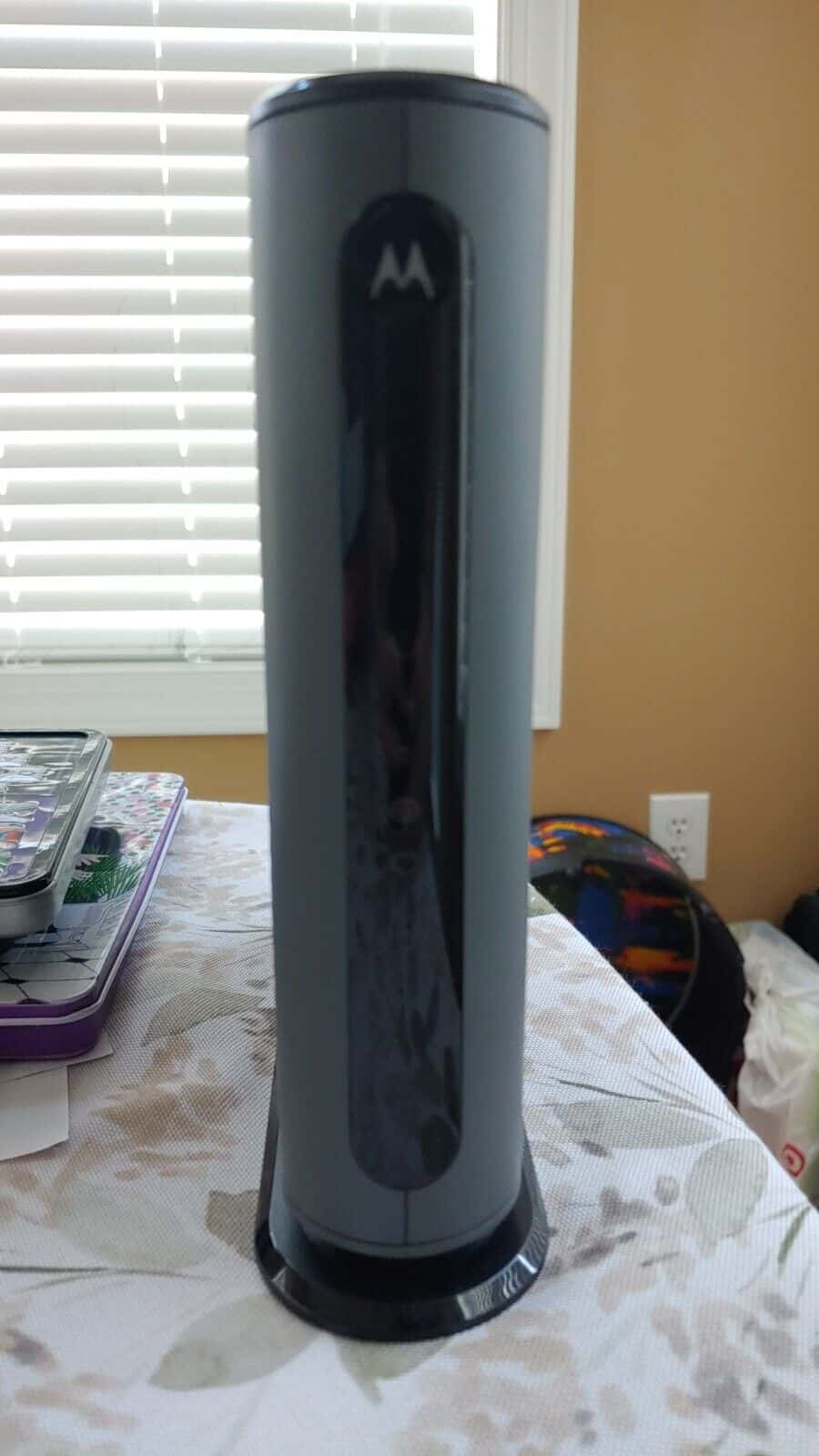
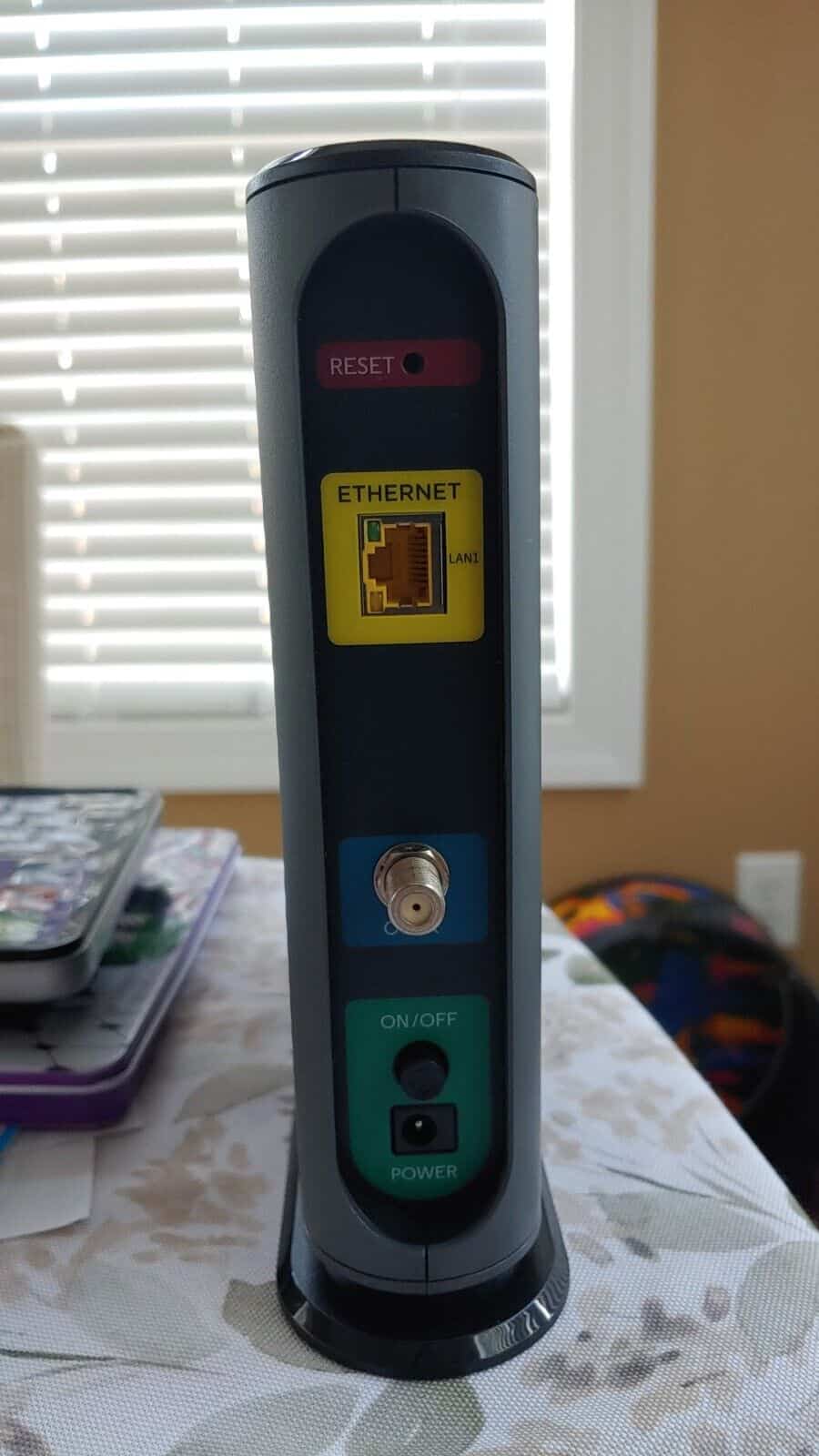
Motorola MB8611 boasts a minimalistic design with rounded corners and a small footprint. Besides, there are colorful LEDs in the front, which gives the modem a very modern look.

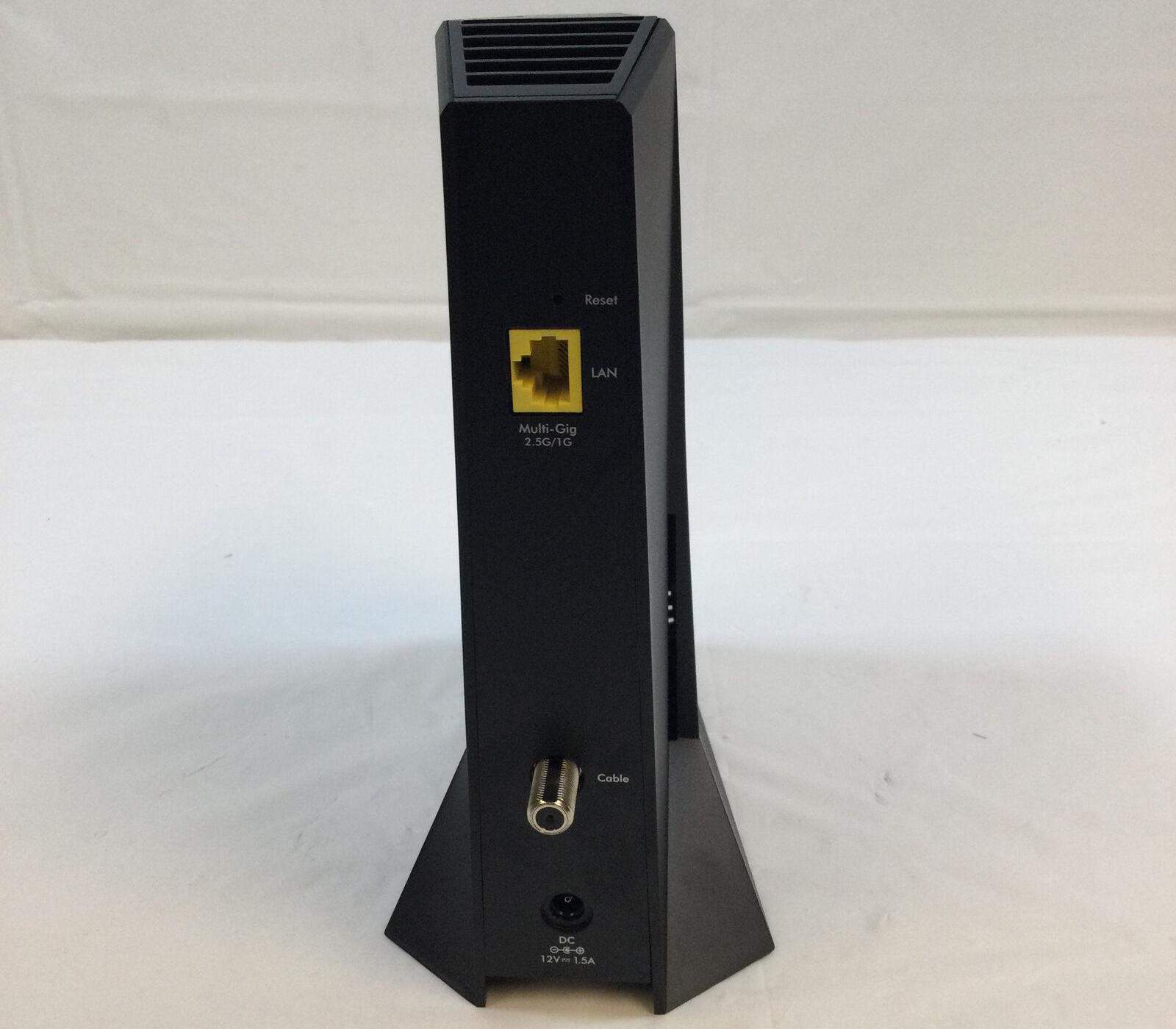
Netgear CM2000, on the other hand rather, looks futuristic with its edgy design. Dimension-wise, at 9.92 x 4.7 x 8.7 inches, it is much larger than its counterpart, which is 7.88 x 7.25 x 2.25 inches.
The modem has more angles and edges around the chassis, making it stand out from others. Besides, it also instills LED lights in the front, but they aren’t as attractive as in the other.
But where MB8611 takes the lead is the mesh side panels that make room for better air passage to dissipate more heat. While a solid chassis in CM2000 with a few gaps doesn’t make it as efficient, I didn’t encounter any performance gaps with it.
Installation and Management
Like most top-tier modems, refreshingly simple and a few-step installation makes them an ideal choice for those who aren’t into these devices much.
Besides that, the respective compatible apps' simple and clean user interface makes for much easier management.
Hardware & Other Features
Hardware setups of both Motorola MB8611 and Netgear CM2000 are almost similar except for their NAND storage, with 128MB and 256MB, respectively.
Both integrate the same multi-gigabit processor, Broadcom BCM3390V, an upgrade to BCM3390, as seen in the previous modems, Netgear CM1200 and CM1000.
As a result, you can expect a similar performance from both, and there won’t be any major lags or inconsistencies when you are online with tasks like gaming, streaming, and video conferencing.
Pros & Cons of MB8611
Pros
- Retains safe temperatures
- AQM for low-ping gaming
- Minimalistic design
- Affordable than CM2000
- 2-year warranty
Cons
- Firmware problems
- Disconnect issues
Pros & Cons of CM2000
Pros
- Consistent performance
- Netgear's reliability
- Futuristic design
- Supports most ISPs
- Simple setup
Cons
- High ping value when gaming
- Expensive than MB8611
Similarities Between Motorola MB8611 and Netgear CM2000
- Similar and the latest DOCSIS technology, i.e., 3.1, with both compatible to DOCSIS 3.0
- Number of upstream and downstream channels (32 & 8 respectively)
- A 2.5G Ethernet for faster throughput
- Supports plans up to 2.5 Gbps
- Comparable processing setup 512MB RAM and a Broadcomm chipset
- Vertical layout with proper venting
- Seamless configuration
- Weight is almost the same
Frequently Asked Questions
Yes and no. Some units face frequent disconnects and firmware-related issues. However, at around $200, it’s one of the few modems with a 2.5 Gbps port, a minimalistic design, and a two-year warranty.
Priced almost $60-70 more than MB8611, the CM2000 boasts a much better design with curved edges, solid and matt-black chassis, and better performance and reliability. However, if you are a gamer who also indulges in activities like streaming and video conferencing, MB8611 with AQM support should be fine too.
Conclusion
Comparing MB8611 to CM2000, it’s clear that both are almost identical specs-wise, But the CM2000 turns out to be better. Although not all units face disconnect and firmware issues, it's wise to invest a few extra dollars and get the ever-reliable CM2000.
Want even more useful connectivity guides? Checkout:




